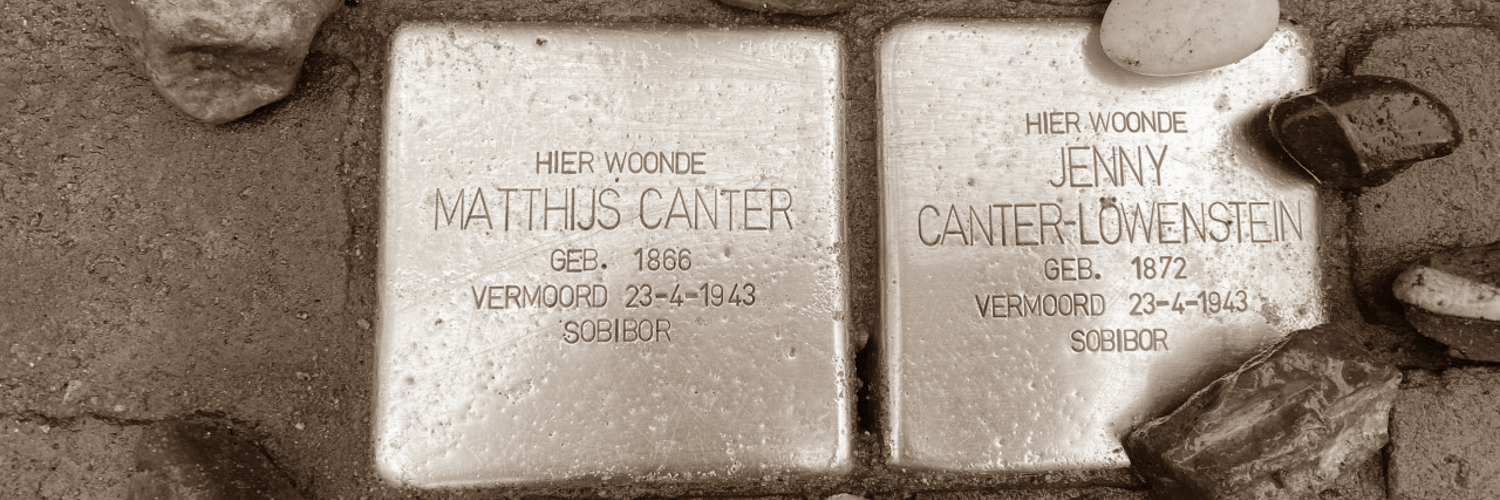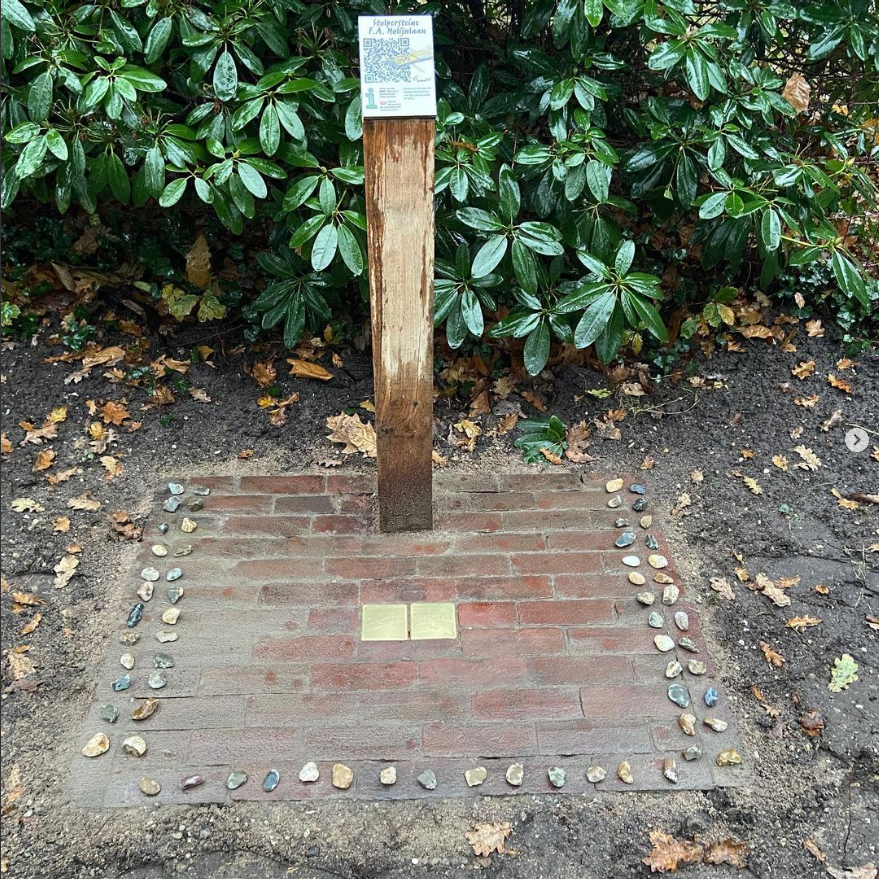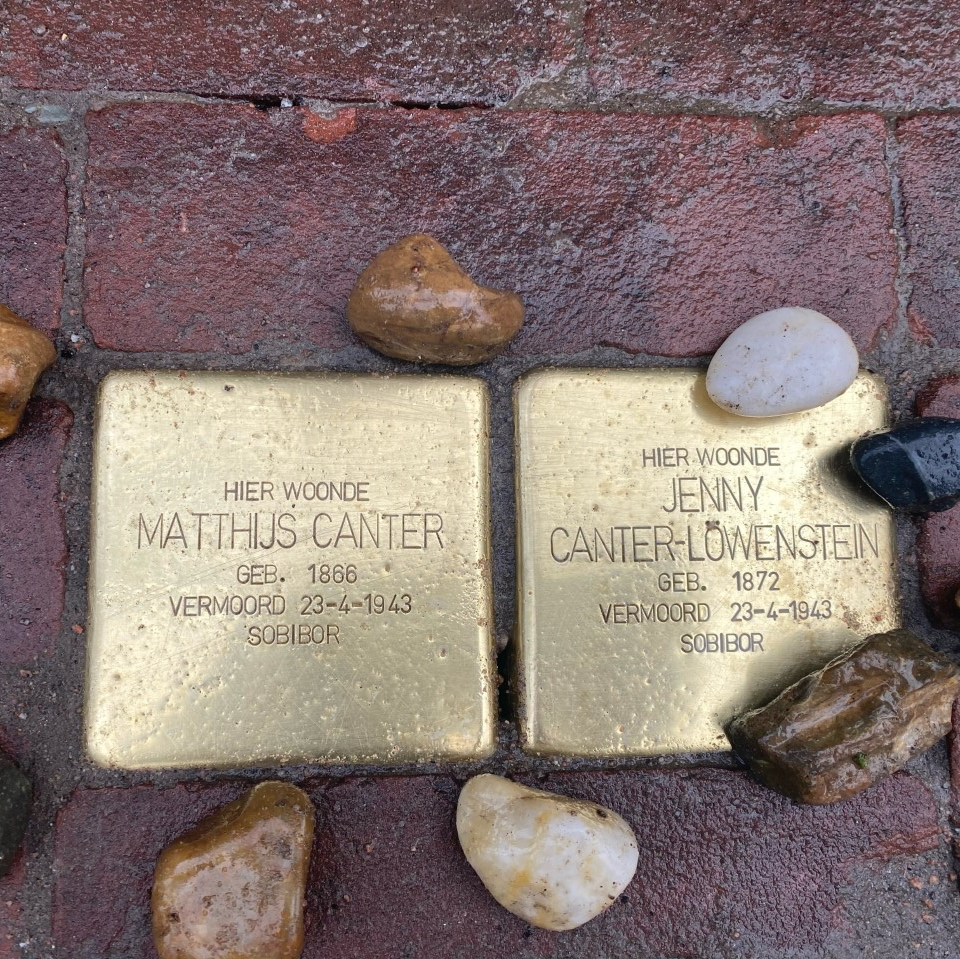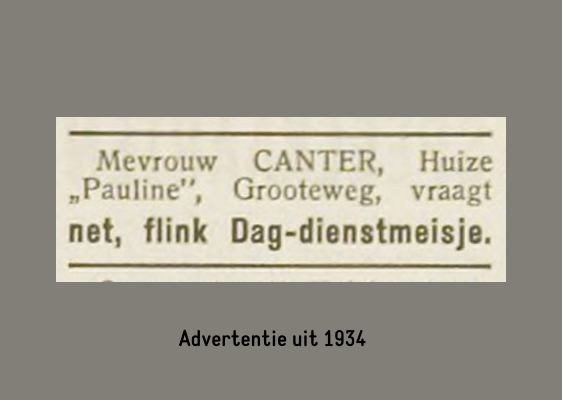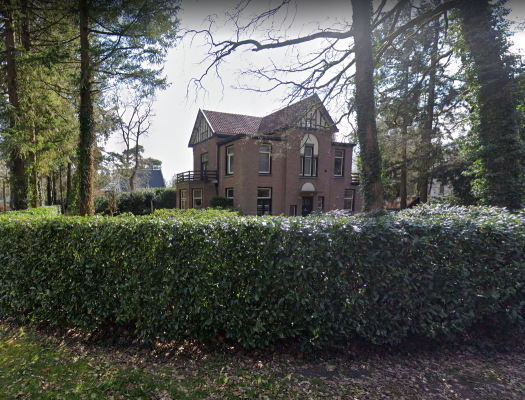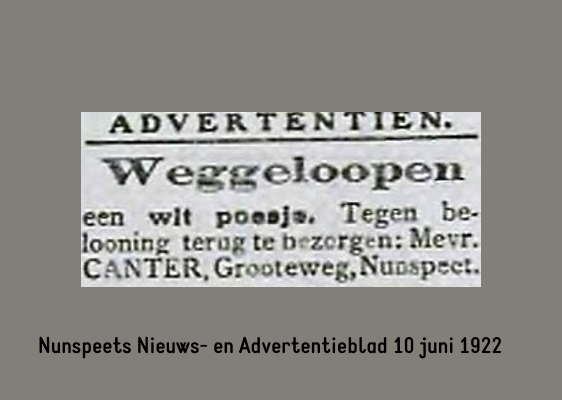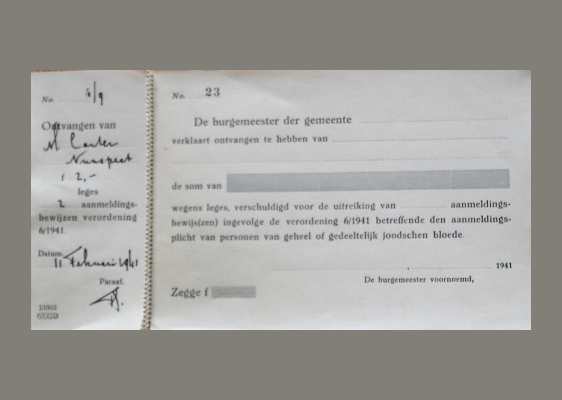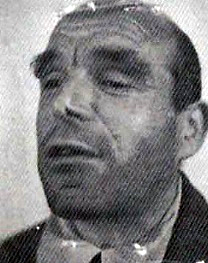The Canter couple
The Stolpersteine at F.A. Molijnlaan 75 (formerly 49) were laid on November 26, 2021 for the Jewish couple Matthijs Canter and Jenny Löwenstein. They left this address for the Westerbork camp in early April 1943 and from there to Sobibor on April 20. They both died on April 23, 1943. When Matthijs Canter and his wife left home with a suitcase in their hands, a gardener from a garden on Molijnlaan asked with interest where they were going. He knew the Jewish couple. They said that they had received a summons to report to Westerbork, but that they would be home in a few days. It turned out later that they really meant it, because the dishes were still on the counter. Matthijs Canter and his wife Jenny Löwenstein never returned.
The Canter Jew
Matthijs Canter had been living with his wife and their son Julius since 14 April 1921 at F.A. Molijnlaan 49 in Nunspeet, on the corner with Groenelaantje. They came from Amsterdam at the time. The village of Nunspeet did not have a Jewish community like Harderwijk and Elburg. It is not known why the family came to live in Nunspeet. Matthijs Canter was 55 years old at the time, without a profession, his wife Jenny Löwenstein was 48 years old and son Julius was 20 years old. Julius would receive his own personal card on 11 July 1925 with the address Veldwijk 75 in Ermelo. The couple participated in Nunspeet life. Canter was known in Nunspeet as the ‘Canter Jew’.
House Pauline
In 1929, Canter was confronted with a fire. The newspaper of 19 September 1929 reported that a fire had broken out in a villa on the Grooteweg of Joachim van Nootdorp.
‘The fire spread so violently that the adjacent plot of land belonging to Mr Canter also caught fire and was soon ablaze. The contents of Mr J. v. N. were also caught in the flames and burned, while the partially remaining furniture of Mr C. suffered greatly from water damage’.
The house was now called Pauline, as can be seen from an advertisement from 1934.
Among the incoming documents for the meeting of the municipal council on 28 June 1935, number 17 contained a letter from M. Canter in Nunspeet, ‘regarding the draft regulation containing building regulations for the F. A. Molijnlaan in Nunspeet’. Canter was not the only one, because there was also an objection from the Veluvine paint factory.
The factory had even sent a telegram protesting the fact that the submission of the building regulations for the F.A. Molijnlaan had not been discussed in advance and requested that this agenda item be held. (source: Nunspeet Nieuws- en Advertentieblad dated 6 July 1935)
Abgereist...
Matthijs Canter was born on 5 January 1866 in Amsterdam as the son of Salomon Matthijs Canter and Mathilda Jacobs. He had a twin brother Eduard, an office clerk by profession and who died unmarried on 17 January 1937. The eldest brother was Leonard Matthijs (1865-1925), a diamond merchant by profession. The only thing known about the youngest brother Isidoor, born in 1867, is that he went to Paris in 1913.
Matthijs Canter married Jenny Löwenstein, born on 19 August 1872 in Bielefeld (Germany), on 16 May 1900 in Bielefeld (Germany). Their son Julius was born on 5 April 1901 in Amsterdam.
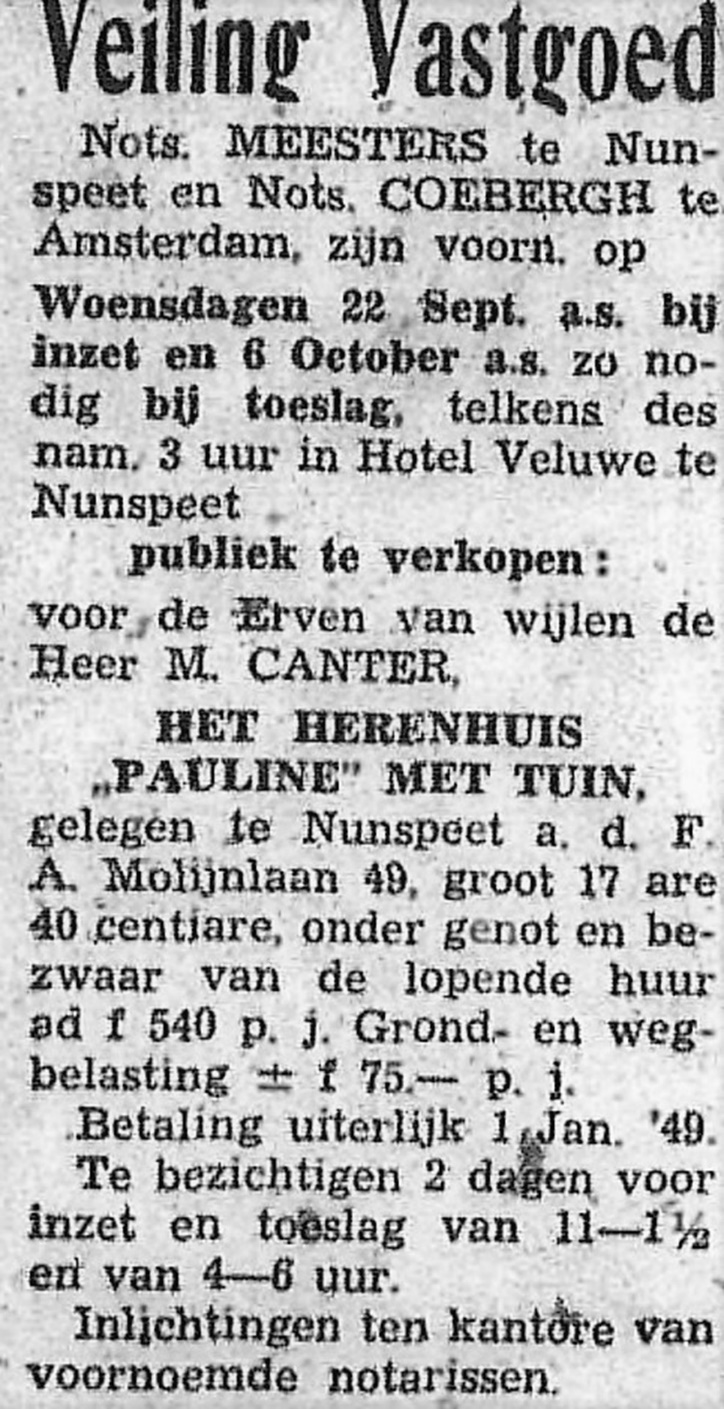 During the war years, the family adhered to the rules imposed on Jews. For example, on 11 February 1941, he registered with the municipality and paid the fees for the registration certificate. And in 1943, Canter and his wife responded to the call to report to Camp Westerbork. On 3 May 1943, the municipality of Ermelo received the message that they had ‘departed’ via ‘Lager Westerbork’ on 20 April.
During the war years, the family adhered to the rules imposed on Jews. For example, on 11 February 1941, he registered with the municipality and paid the fees for the registration certificate. And in 1943, Canter and his wife responded to the call to report to Camp Westerbork. On 3 May 1943, the municipality of Ermelo received the message that they had ‘departed’ via ‘Lager Westerbork’ on 20 April.
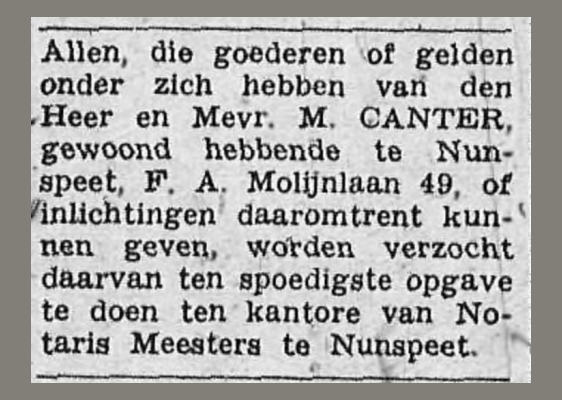 The death of Matthijs, Jenny and Julius Canter was not officially reported until 13 June 1947 by Lodewijk Canter ‘aged 31, civil servant, living in Amsterdam’. Lodewijk was a son of Leonard Matthijs Canter, Matthijs’ eldest brother.
The death of Matthijs, Jenny and Julius Canter was not officially reported until 13 June 1947 by Lodewijk Canter ‘aged 31, civil servant, living in Amsterdam’. Lodewijk was a son of Leonard Matthijs Canter, Matthijs’ eldest brother.
Son Julius
After the departure of the Canter couple, the house was confiscated. The possessions were inventoried. The house was rented out. In 1944, the NSB mayor De Kruijff was the resident. In 1948, F.A. Molijnlaan 49 was sold.
Son Julius had moved to Veldwijk in Ermelo in 1925. He was one of the psychiatric patients there. In 1943, the Jewish residents of the institutions ‘s Heerenloo and Veldwijk had to be transferred to Westerbork. The management did not cooperate with the police at all. Twelve ‘children’ from ‘s Heerenloo and two patients from Veldwijk eventually went by bus to Westerbork on 10 April 1943 and from there by train to Sobibor on 13 April. Upon arrival on 16 April 1943, all but one were killed immediately. Among them was Julius Canter, 42 years old. Photo on the left from the booklet ‘Het leven niet waard’ by Janneke de Moei


